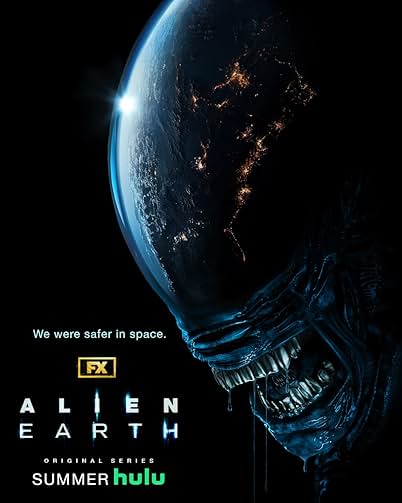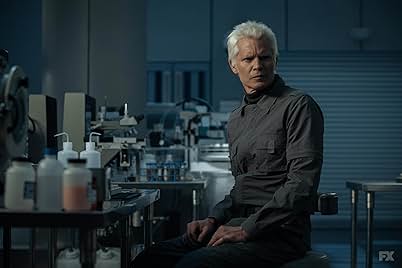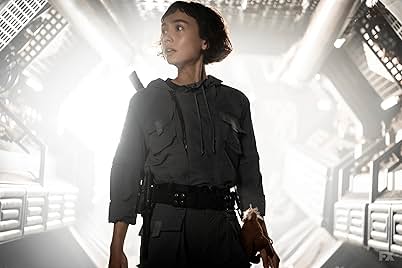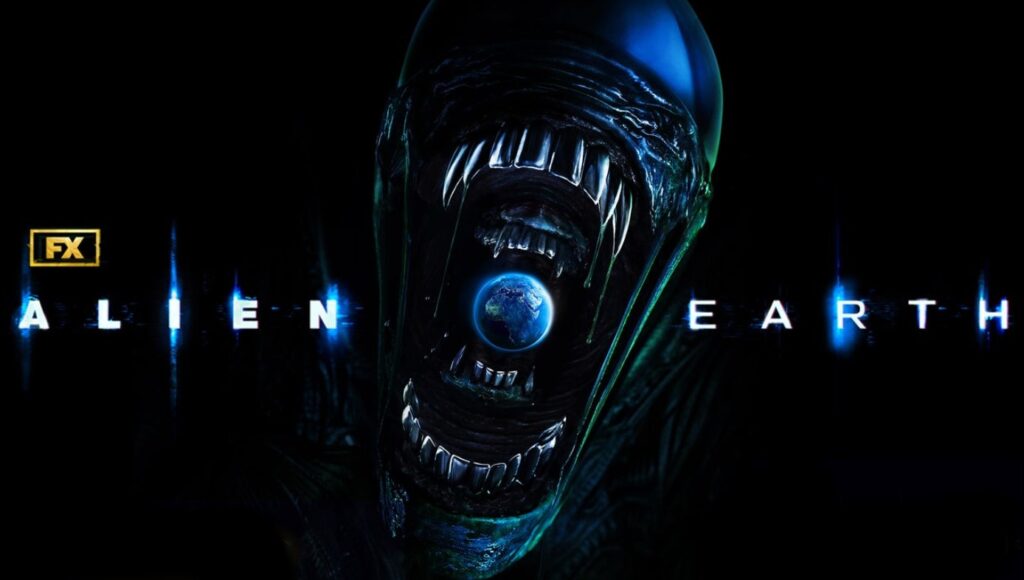The Alien: Earth review why this 2025 FX series delivers genuine terror and emotional depth. Noah Hawley’s masterful direction transforms familiar xenomorph territory into something genuinely terrifying and emotionally resonant.
What happens when you combine the isolation of a crashed alien vessel with humanity’s most primal fears about survival? You get science fiction horror perfection. Alien: Earth (2025), created by Noah Hawley, stands as one of the most compelling xenomorph stories in the franchise’s television history. This intense prequel series follows a young woman and tactical soldiers who discover Earth’s greatest threat after a mysterious space vessel crash-lands on the planet. While the series operates on familiar Alien franchise territory, it succeeds because it never exploits its premise—every moment of terror and character development is handled with complete emotional authenticity.

Synopsis
Set two years before the events of the original 1979 film, Alien: Earth follows Wendy, a young woman whose life changes forever when a mysterious space vessel crashes on Earth. Along with a ragtag group of tactical soldiers, she makes a discovery that puts them face-to-face with the planet’s most dangerous threat. The xenomorphs have arrived on Earth, and humanity is completely unprepared for what’s coming.
As the team struggles to understand and contain the alien menace, they must overcome their own fears and limitations while racing against time to prevent global catastrophe. The series follows their transformation from ordinary people thrust into extraordinary circumstances to humanity’s last hope against an enemy that seems impossible to defeat, no matter the cost.

Plot & Themes
Alien: Earth operates on a devastatingly complex premise: sometimes the most profound courage emerges from humanity’s first encounter with ultimate terror. The Earth setting serves as both familiar backdrop and metaphor for exploring deeper questions about survival, evolution, and the courage to face the unknown when everything depends on human ingenuity.
The series’ genius lies in its careful balance between horror elements and character development. When the protagonists face impossible choices between personal safety and species survival, the show never treats their internal struggles as secondary to the xenomorph action. These moments work because Hawley understands that true horror comes from emotional investment in the characters’ desperate situation.
Thematically, the series explores how first contact can become humanity’s greatest nightmare and how individuals can find extraordinary bravery when confronted with extinction-level threats. The characters’ journey isn’t just about surviving alien attacks—it’s about discovering that human cooperation and sacrifice can triumph over seemingly insurmountable odds.

Cinematography & Visuals
The cinematography captures the apocalyptic beauty of the crash site with visual techniques that serve both the horror and human elements perfectly. The visual style emphasizes the contrast between Earth’s familiar landscapes and the otherworldly terror of xenomorph encounters, using atmospheric lighting and practical effects to create mounting dread.
The series excels in building tension through environmental storytelling. The sequences showing the crashed vessel and the xenomorphs’ first emergence demonstrate excellent use of practical effects combined with cutting-edge technology. The camera work holds on meaningful moments of fear and determination just long enough to create genuine emotional investment.
Alien details reward careful viewing. During encounter sequences, attentive viewers will notice how the characters’ growing understanding of xenomorph behavior is reflected in their increasingly strategic survival tactics and group coordination.
Acting & Characters
Sydney Chandler delivers a compelling performance as Wendy, anchoring the ensemble with her portrayal of a woman finding courage she didn’t know she possessed. Her character arc from ordinary civilian to reluctant hero feels authentic and earned rather than forced.
Timothy Olyphant provides excellent support as a key tactical team member, bringing both military authority and growing humanity to his role. His chemistry with Chandler creates a believable partnership between unlikely allies under extreme circumstances.
Alex Lawther rounds out the core cast with a performance that balances military precision with emotional vulnerability. His scenes during the most dangerous xenomorph encounters demonstrate genuine terror while maintaining character consistency.
The supporting cast, including Essie Davis, Samuel Blenkin, and Adarsh Gourav, brings authenticity without falling into stereotype, creating believable humans facing an unprecedented alien threat.
Direction & Screenplay
Noah Hawley’s direction maintains perfect tension throughout the series’ runtime. Coming from his experience with prestige television like Fargo and Legion, Hawley understood that Alien stories require careful pacing that builds horror without sacrificing character development. Every revelation and attack sequence is given space to resonate emotionally.
The screenplay layers tension at multiple levels:
- Character development that explores fear and courage authentically
- Xenomorph elements that feel fresh within franchise continuity
- Horror components that build naturally from the alien encounters
- Survival beats that never feel manipulative or contrived
The script’s structure follows Alien conventions while subverting them through genuine character growth. This creates familiarity that makes the unexpected moments of heroism and sacrifice land with greater impact.
Sound & Music
The series’ score perfectly balances industrial spaceship sounds with underlying dread to create an audio landscape that mirrors the characters’ psychological journey. The music enhances rather than overwhelms the natural horror of xenomorph encounters.
Sound design plays a crucial role in building terror. The way xenomorph movements echo through crashed vessel corridors, and how the characters’ breathing becomes more labored as danger increases, creates an immersive experience that places viewers directly into their terrifying situation.
The use of silence deserves particular recognition. Key moments of stalking and alien encounters are allowed to breathe without musical manipulation, trusting audiences to connect with the characters’ primal fear through atmospheric sound and performance alone.
Conclusion & Verdict
Alien: Earth succeeds because it treats its franchise premise with intelligence and respect for both the established mythology and the audience’s capacity for sophisticated horror. Every element—from performance to cinematography to sound design—works in service of both terror and human dignity without sacrificing either.
Strengths:
- Exceptional ensemble cast that creates believable heroism under impossible pressure
- Authentic xenomorph elements that honor franchise continuity while feeling fresh
- Excellent pacing that builds dread while maintaining character focus
- Thoughtful exploration of first contact horror through action rather than exposition
Minor Weaknesses:
- Some franchise elements feel slightly predictable for longtime fans
- Occasional pacing issues in exposition-heavy sequences slow momentum briefly
This series remains essential viewing for science fiction fans and anyone who appreciates character-driven horror storytelling. Alien: Earth works for audiences who enjoyed the original Alien films, Stranger Things, or The Walking Dead.
Rating: 9.0/10
Creator/Director: Noah Hawley
TV Rating: TV-MA (for intense violence, disturbing images, and strong language)
Starring: Sydney Chandler, Timothy Olyphant, Alex Lawther, Essie Davis, Samuel Blenkin, Adarsh Gourav
For more science fiction reviews, check out our analysis of other FX original series. You can also explore the series’ production details at the Internet Movie Database.


